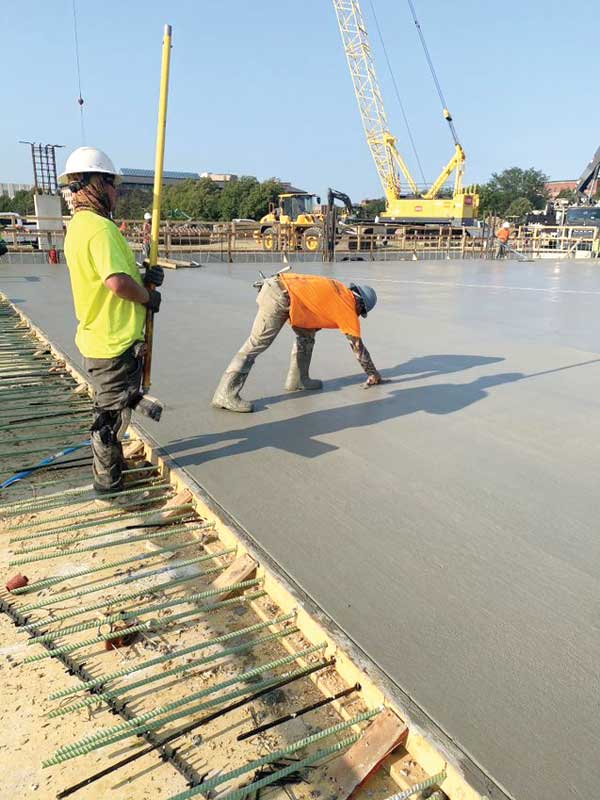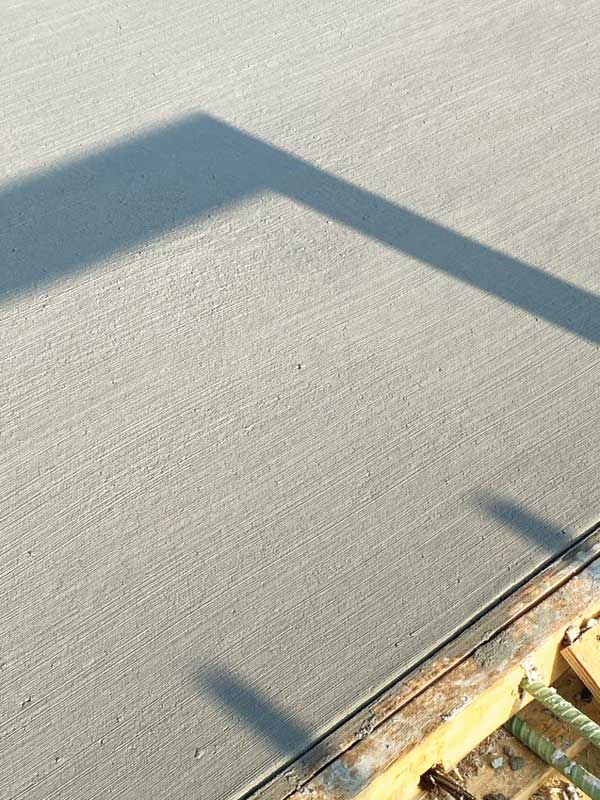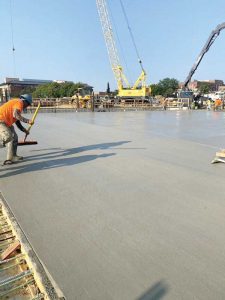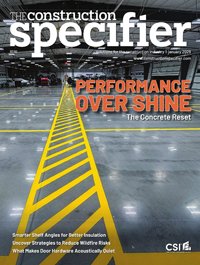Specifying corrosion inhibiting admixtures for concrete structures
Amine carboxylate technology has also shown good protection in cracked beam testing,11 an important characteristic for ongoing protection beneath cracked or damaged concrete. Several amine carboxylate admixtures are certified to meet ANSI/NSF 61 for use in drinking water system components, which is a relevant feature for those designing concrete water tanks. There is also good evidence that amine carboxylate admixtures will inhibit carbonation-induced corrosion as well as chloride-induced corrosion.12
Amine esters
Amine esters are dosed at 5 L/m³ (1 gal/yd³)13 and do not significantly affect set time.14 Amine esters are likely to block the ingress of contaminants to slow the corrosion process. However, since pore-blocking is the primary mechanism of amine esters, it is difficult to evaluate their corrosion inhibiting efficiency per standard tests.
Estimating service life
Once the engineer has identified which admixture characteristics are preferred for the project, computer modeling can be used to estimate and compare projected service lives for different combinations of protective materials and concrete mix types. Several service life prediction models exist, including STADIUM,15 WJE CASLE,16 and Life-36517; the latter is open-access and therefore more commonly used. These models take into account many different factors, such as environmental conditions (e.g. marine, high temperature), structural component (e.g. beam, column, slab, etc.), mix type, corrosion inhibitors, and the use of other corrosion-reducing features (e.g. epoxy-coated rebar or galvanized rebar). Based on these and many other parameters, the service life prediction software estimates both the time to corrosion initiation and propagation. Together, these estimates give the expected years of service life.
Some corrosion inhibitors are already entered as values into the models. In the case of Life-365, calcium nitrite and an amine ester corrosion inhibiting admixture are included in the drop-down list. Values for other corrosion inhibitors must be entered manually. In the case of amine carboxylates, the chloride corrosion threshold limit and the propagation period can be customized in the model based on the results of ASTM G109.
Dr. Mohamad Nagi, PE, Ph.D., of the American University in Dubai (AUD), took some of these findings and concluded the chloride corrosion threshold of one amine carboxylate corrosion inhibiting admixture was 0.18 percent by the weight of concrete.18 This became the manufacturer’s recommended input for amine carboxylate admixtures in Life-365 modeling. Since ASTM G109 testing has shown a corrosion rate reduction of five times for this specific amine carboxylate formula,19 the manufacturer also recommends multiplying the corrosion propagation period by a factor of five to calculate time to the first repair.20 Other variations on the same chemistry may have slightly different inputs based on test results.
Service life predictions can be very insightful when compared side by side, showing the potential time gained from different types of admixtures and protective mechanisms. For example, one hotel project situated on the Gulf Coast had an estimated service life of 11 years when using uncoated rebar, 25 years with epoxy-coated rebar, and 40 years with a biobased amine carboxylate. The project ended up choosing a biobased amine carboxylate, saving six figures by eliminating the cost of epoxy-coated rebar in favor of the admixture.21












